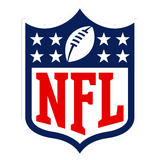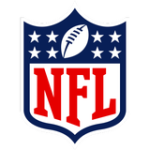
<!–>
The NFL has spent most of the past three seasons trying to figure out a way to stop the Philadelphia Eagles’ signature “tush push” play. On Wednesday morning, at the NFL owners’ meetings in Minneapolis, they finally almost did.
Thankfully, the NFL owners came up two votes short in their misguided attempt to ban the defending Super Bowl champs’ most famous play, with the ban, proposed by the Green Bay Packers, failing two votes short of the necessary 75% to be passed (22-10) ahead of the 2025 season. But the fact that they came so close this time is probably a sign that momentum is building toward a ban. They are just a little push — yes, pun intended — away from doing what their defenses can’t.
A ban might happen as soon as next offseason. And if, or when, it does, it would just be wrong.
That’s because the anti-tush push push has always been about just one thing: jealousy. It’s not about any of the other reasons the play’s opponents have tried to create. The NFL has leaned hard into the claim that it’s about player safety, but provided no evidence that it increases the risk of injury. Some around the league claimed it’s more of a “rugby play” than a football play, which is aesthetic nonsense, as if everything in football has to be about highlight reels and speed and grace.
What really irked the anti-pushers was their inability to stop it — or at least to duplicate something that the Eagles very quickly became incredibly good at doing. They tried and failed on both sides of the ball, so they simply decided they couldn’t let that advantage stand.
ADVERTISEMENT
–>
But it’s not that the tush push is an unstoppable play. It’s that the Eagles are virtually unstoppable when they run it. That’s not an accident, either. In the three seasons since they first started running the play regularly, they’ve had what is widely regarded as the best offensive line in the league, anchored by at least two future Hall of Famers, maybe more, including the best center in the league (Jason Kelce) for two of those years. It also helps that quarterback Jalen Hurts, who has converted 86% of his career tush pushes, has powerful legs and can squat more than 600 pounds.
That is why the Eagles ran it so much and so well. It’s also why left tackle Jordan Mailata shrugged off any talk of a possible ban when he spoke to reporters on Tuesday, saying “I guess we’ll just do it with no push.”
They probably could. Because it’s always been more about the push from the front than the push from behind. And the rest of the league didn’t like that they couldn’t figure that out.
“I don’t ever remember a play being banned because a single team or a few teams were running it effectively,” Eagles owner Jeffrey Lurie said at the NFL owners meetings in April. “It’s part of what I think most of us love about football. It’s a chess match. Let the chess match play out.”
That’s how this is supposed to work. History shows plenty of examples of NFL coaches designing a seemingly unstoppable play or scheme — anyone remember the “Wildcat”? — only to have coaches on the other side of the ball figure it out a few years later. And don’t forget, the Eagles aren’t the only team who employ the tush push. Defensive coaches seem to have figured out how to stop it against almost everybody else.
But the Eagles run it more often and run it better. They ran 108 tush pushes over the past three seasons, according to ESPN Research — almost twice as much as any other team. The Buffalo Bills, with their 6-foot-5, 237-pound quarterback Josh Allen, ran it 55 times. No other team has run it more than 16 times, or about five times in each 17-game season.
Also, the Eagles work on it. A lot. Two offseasons ago, they even brought in Richie Gray, a professional Scottish Rugby coach who has consulted with several NFL teams on tackling techniques, to help refine it. They take it seriously — apparently more seriously than anyone else.
“It’s a little insulting to say we’re good at it, so it’s automatic,” Eagles coach Nick Sirianni said at the scouting combine in February. “We work really hard at it. It’s a skill that our team has because of the players that we have, the way the coaches coach it. There’s just so much time put into it. The fact that it’s a successful play for the Eagles and people want to take that away, I think is a little unfair.”
He’s right, because if just a few other teams were able to do it, nobody would be complaining. And if it was a little prettier — something the NFL could use in viral highlight videos — the league would surely quash any revolution. But it’s an ugly play that no one can master except for the best team in football.
So 22 owners want it gone.
They’ll cite injuries — or at least the potential for injuries — which Sirianni correctly said is “a little made up, to be honest.” The extra shove from behind doesn’t create enough force to cause more injuries than, say, the average quarterback sneak or a plunge from a 200-pound running back getting a head start from five yards behind the line. And there’s been no evidence presented to show that it does.
And the idea that it’s not a “football play” is just nonsense. In fact, it’s almost the essence of football, with bodies being hammered together in the ultimate show of strength and force. Yes, until 2005, the NFL banned pushing and pulling ball carriers. But the league changed the rule back then because it was impossible for officials to enforce and wasn’t believed to be that much of a competitive advantage anyway.
So, for nearly 20 years, the NFL has survived with all the pushing and pulling they could muster and the league didn’t implode, nor did players start dropping. It wasn’t until the Eagles perfected it in 2022 that it suddenly became a sight that made for sore eyes.

“Just because it’s a successful play for us,” Sirianni said, “doesn’t mean that it should go away.”
He’s right again. NFL owners would be wiser to tell their defensive coaches to find a way to stop it, and their offensive coaches to find a way to perfect it rather than continuing this push for a ban. Because when the play is less effective, or when everybody is great at it, nobody is really going to care.
Instead, the push for the ban will likely push on, with debates throughout the season and talk of another vote — likely with a slightly revamped proposal — when the owners meet again next spring. They could continue to push it off if they wanted, hoping that the play will become less effective over time. The Eagles’ line won’t be this good forever, and powerfully built quarterbacks like Hurts and Allen aren’t necessarily a threat to dominate the future of the league.
But they almost certainly won’t leave it alone and let the “chess match” play out the way it always does. They’ll keep fighting against it as long as the Eagles are good at it — or at least better at it than their own teams.
“And if for any reason it does get banned, we’ll try to be the very best at short-yardage situations,” Lurie said. “We’ve got a lot of ideas there.”
Don’t worry. If they get good at those, the other owners will probably try to ban those, too.
Ralph Vacchiano is an NFL Reporter for FOX Sports. He spent the previous six years covering the Giants and Jets for SNY TV in New York, and before that, 16 years covering the Giants and the NFL for the New York Daily News. Follow him on Twitter at @RalphVacchiano.
Want great stories delivered right to your inbox? Create or log in to your FOX Sports account, follow leagues, teams and players to receive a personalized newsletter daily.
<!–>
recommended

Get more from National Football League Follow your favorites to get information about games, news and more
–>
This news was originally published on this post .








Be the first to leave a comment